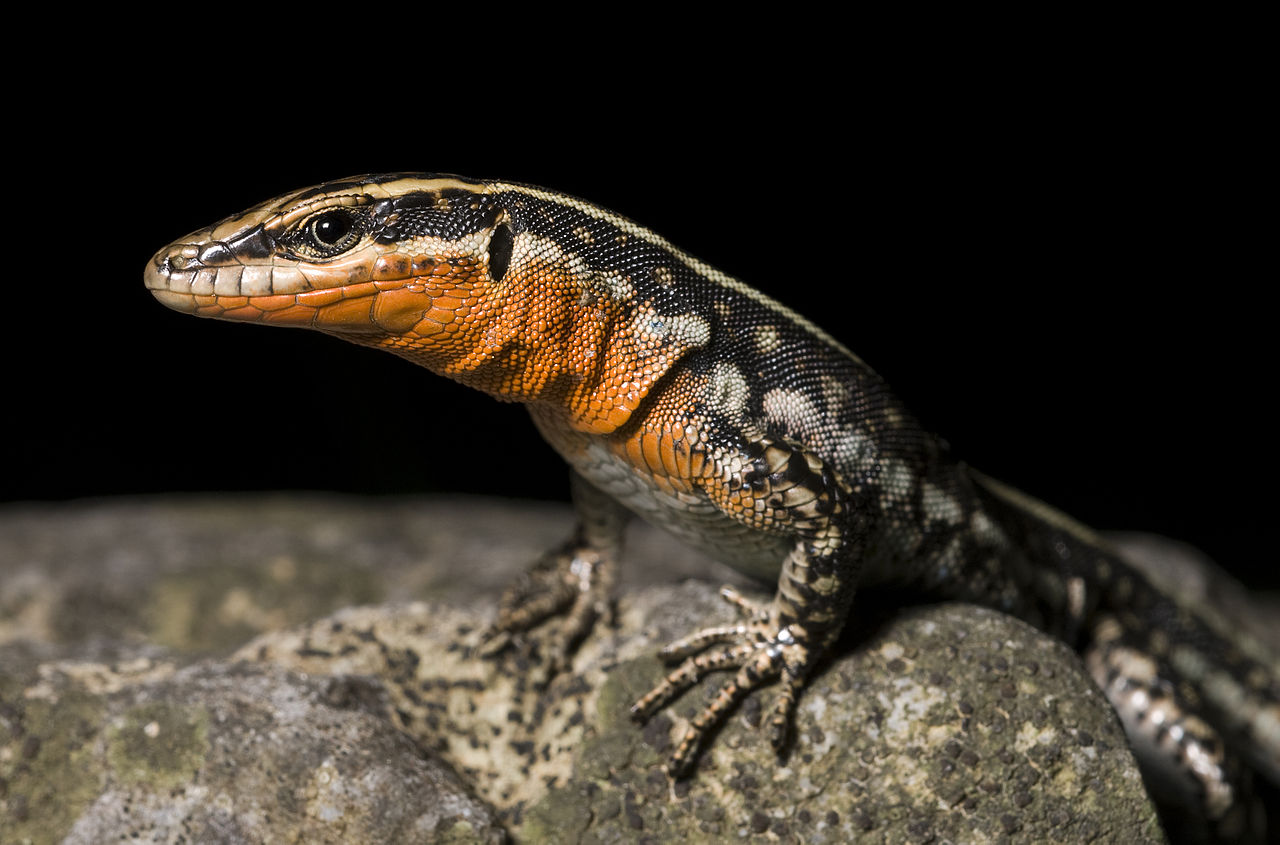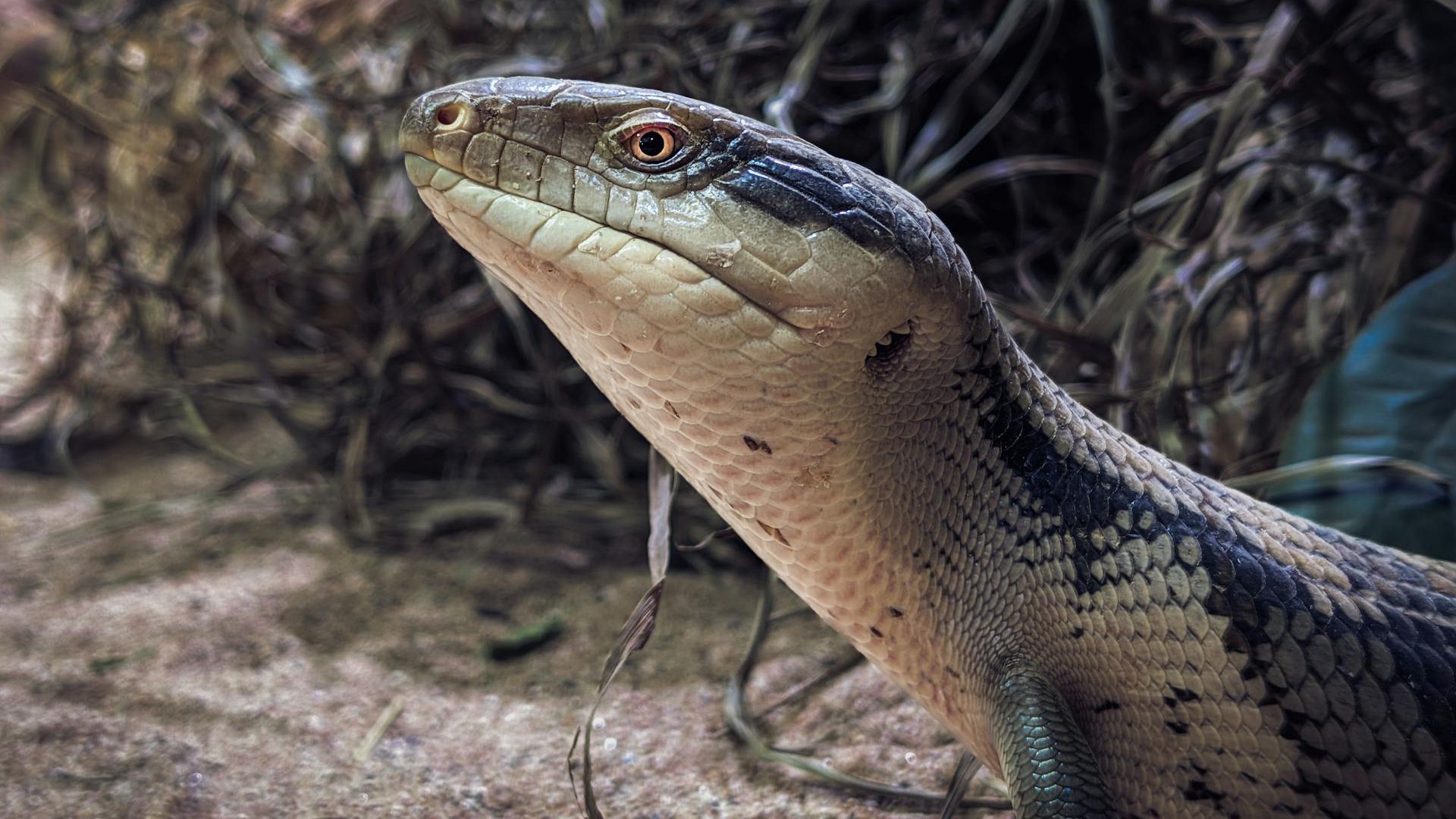The world of reptiles is as fascinating as it is diverse, with over 6,000 species of lizards inhabiting our planet. While many lizards are docile creatures that pose little threat to humans, others possess remarkable defensive mechanisms, territorial behaviors, and predatory instincts that make them genuinely dangerous. These aggressive lizard species have evolved various adaptations—from powerful jaws and venomous bites to whip-like tails and intimidating displays—that demand respect and caution from those who encounter them. Whether in the wild or captivity, understanding these formidable reptiles is essential for safe interaction. This article explores the most aggressive lizard species in the world, examining their behaviors, the reasons behind their aggression, and critical safety precautions for those who might encounter or keep these fascinating yet potentially hazardous animals.
Komodo Dragon: The Apex Predator

The Komodo dragon (Varanus komodoensis) stands as the undisputed king of aggressive lizard species, being the largest living lizard in the world, with males reaching lengths of up to 10 feet and weights exceeding 150 pounds. These massive predators possess a combination of deadly weapons, including serrated teeth, powerful jaws with a bite force of over 39 newtons, and a complex venom delivery system that causes rapid blood loss, prevents clotting, and induces shock in their prey. Their hunting strategy involves ambushing large mammals such as deer, pigs, and even water buffalo, delivering a bite and then patiently tracking the wounded prey for miles until it succumbs to the effects of the venom and blood loss. Most alarmingly, Komodo dragons are among the few lizard species known to have attacked and killed humans, with their territorial nature and opportunistic feeding behavior making them particularly dangerous to those who enter their habitat without proper precautions.
Beaded Lizard: Venomous Temperament
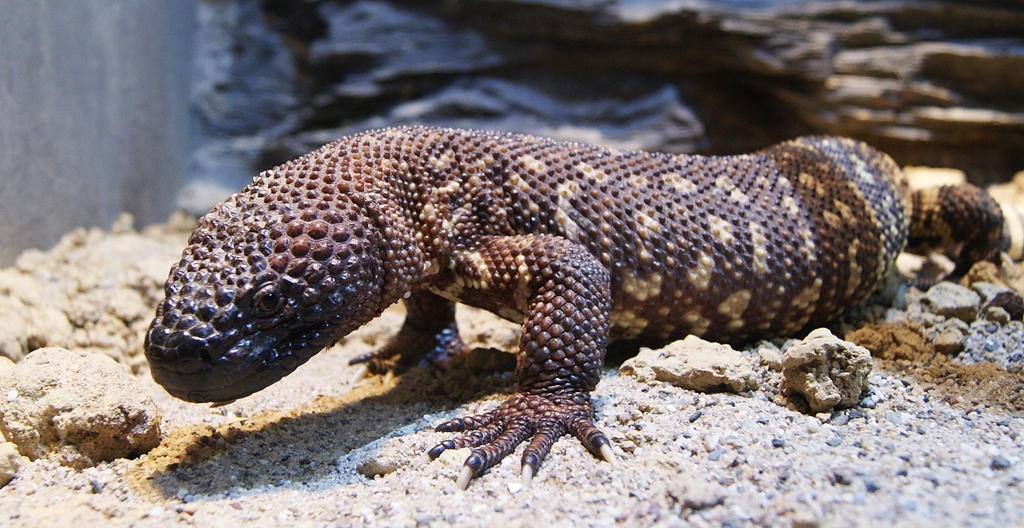
The beaded lizard (Heloderma horridum) is one of only two truly venomous lizard species in the world, alongside its close relative, the Gila monster. Native to Mexico and Guatemala, these strikingly patterned reptiles possess specialized venom glands in their lower jaws that deliver potent neurotoxins capable of causing intense pain, swelling, respiratory distress, and hypotension in humans. Unlike many venomous snakes that strike quickly, beaded lizards employ a distinctive attack strategy—they latch onto victims with their powerful jaws and chew to work venom deep into the wound, often maintaining their grip for several minutes. Their defensive nature becomes particularly pronounced during breeding season or when they feel cornered, at which point they may hiss loudly, open their mouths wide in warning, and if provoked further, deliver their painful bite. Despite their relatively slow movement, their aggression should never be underestimated, as their tenacity and powerful grip make them formidable opponents when threatened.
Gila Monster: The Desert Defender
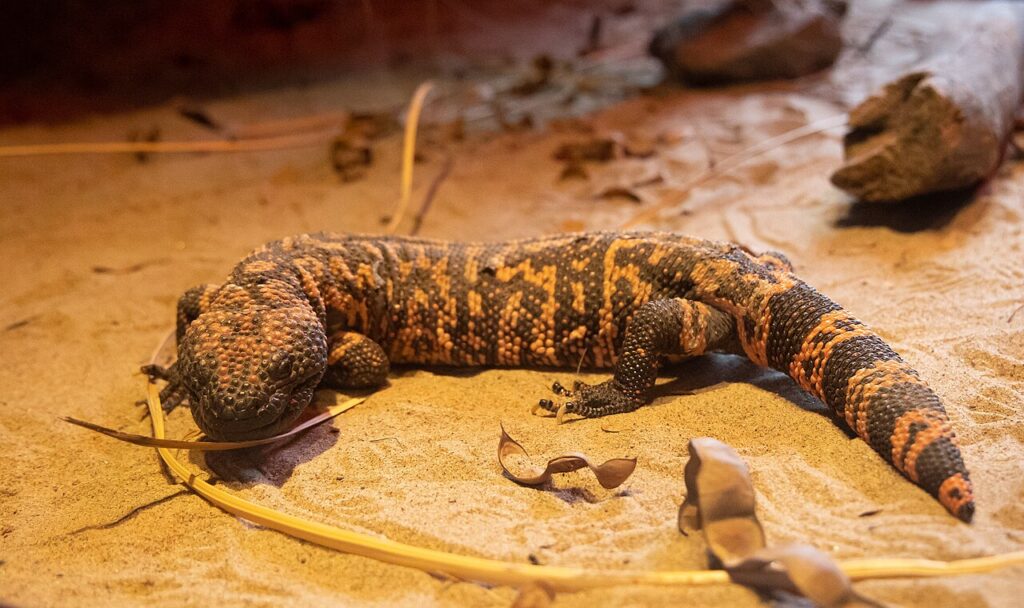
The Gila monster (Heloderma suspectum) has earned its fearsome reputation as one of North America’s most aggressive and only venomous lizard species, native to the southwestern United States and northwestern Mexico. These distinctive reptiles, adorned with striking black and orange-pink beaded scales, possess venom glands that deliver a neurotoxic cocktail through grooved teeth in their lower jaw when they bite and chew on their victims. Though typically slow-moving and retiring, when threatened, Gila monsters undergo a dramatic transformation, hissing loudly, gaping their jaws to display a black mouth lining, and raising their bodies in an intimidating posture before launching a determined attack. Their bite is notorious for being extraordinarily painful—described by victims as feeling like being burned with a blowtorch—and their tendency to “lock on” to their target can result in prolonged venom delivery that may require physically prying their jaws apart. While rarely fatal to healthy adults, their venom can cause intense pain, swelling, weakness, and in severe cases, difficulty breathing and hypotension requiring medical intervention.
Nile Monitor: The Aquatic Aggressor
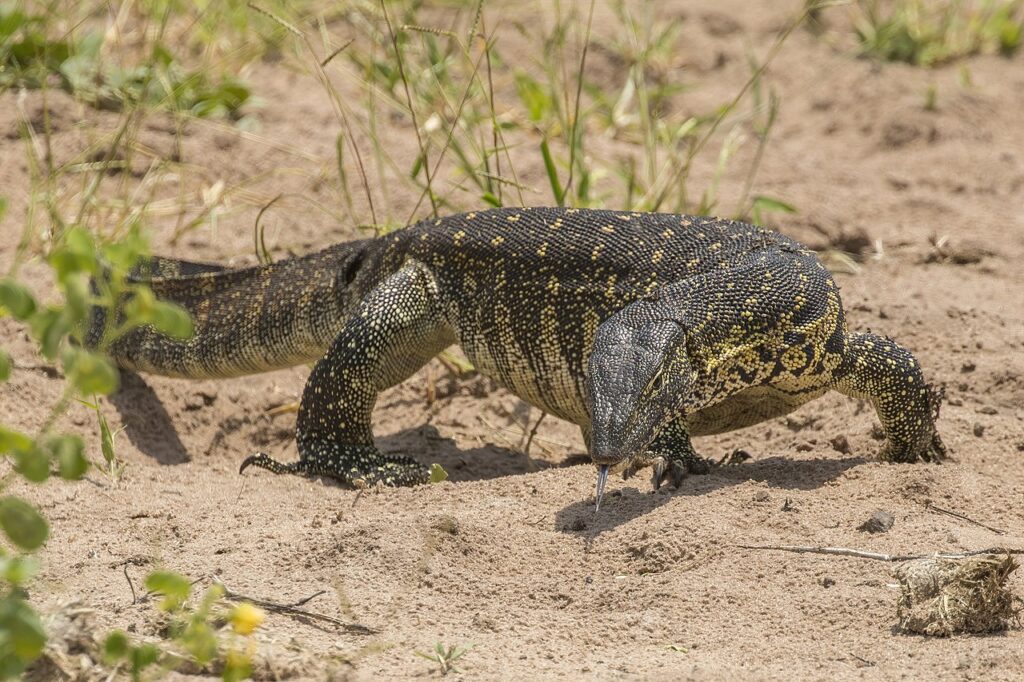
The Nile monitor (Varanus niloticus) ranks among Africa’s most intimidating and aggressive lizard species, with specimens regularly growing to lengths of 4-5 feet and occasionally reaching an impressive 7 feet. These semi-aquatic predators possess an arsenal of defensive weapons, including razor-sharp claws, powerful jaws filled with serrated teeth, and a muscular tail that can deliver punishing whip-like strikes capable of breaking skin and leaving substantial welts. Their aggressive temperament is particularly evident when cornered or handled, at which point they transform into highly defensive animals that hiss, inflate their bodies, and rear up on their hind legs before launching attacks that can include biting, clawing, and tail-whipping in rapid succession. Even captive-bred specimens rarely lose their aggressive tendencies, making them unsuitable pets for inexperienced keepers and requiring specialized handling techniques using proper protective equipment. Their problematic disposition, combined with their high intelligence, has contributed to them becoming invasive species in Florida, where released pets have established breeding populations that threaten native wildlife.
Asian Water Monitor: The Temperamental Giant
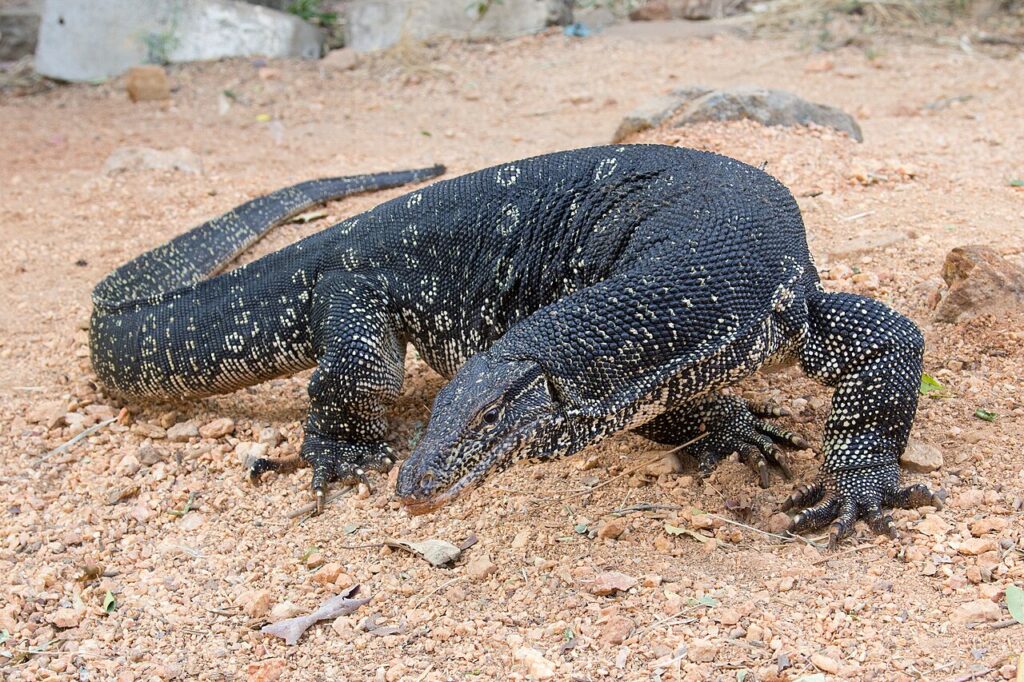
The Asian water monitor (Varanus salvator) ranks among the world’s largest lizards, with specimens frequently exceeding 5 feet in length and occasionally reaching a staggering 9 feet, making their aggressive potential particularly concerning. These powerful semi-aquatic reptiles possess remarkable strength, sharp claws, serrated teeth, and a muscular tail that can deliver devastating defensive strikes when the animal feels threatened. Their aggression manifests most prominently when cornered or handled improperly, at which point they deploy an impressive arsenal of defensive behaviors—hissing loudly, puffing their throats, raising their bodies, and if provoked further, launching into attacks that can include powerful bites capable of severing fingers and deep lacerations from their claws. While wild specimens are typically wary of humans and prefer to escape when possible, captive individuals vary tremendously in temperament, with some becoming somewhat tolerant of handling while others remain perpetually defensive despite years of interaction with their keepers. Their potentially dangerous disposition, combined with their size requirements and powerful builds, makes them unsuitable pets for all but the most experienced reptile handlers equipped with proper facilities.
Crocodile Monitor: The Tree-Dwelling Terror
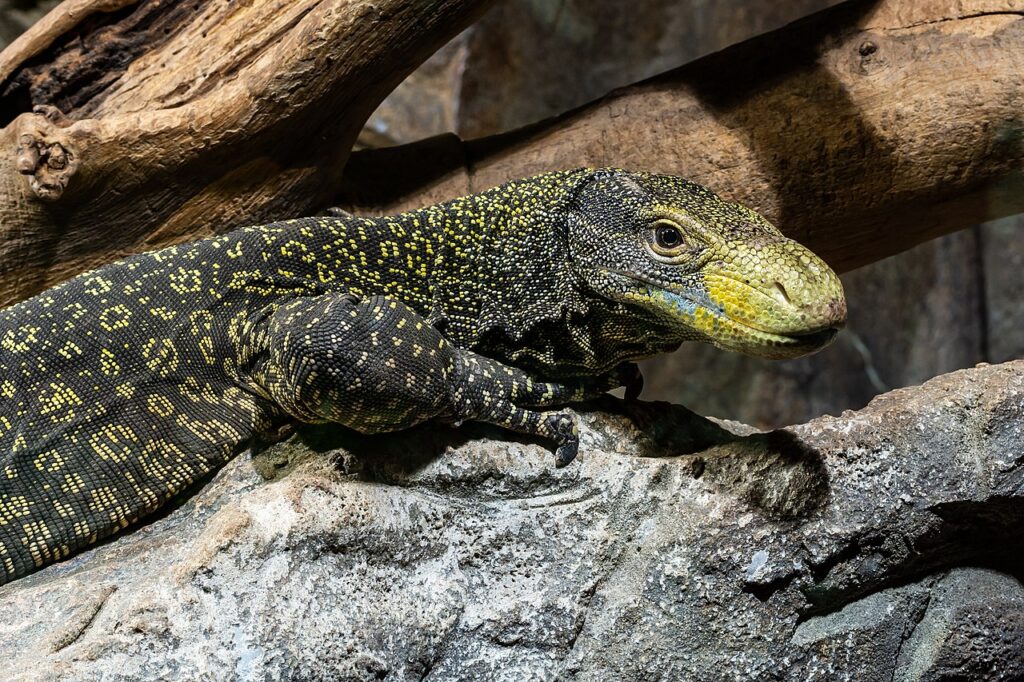
The crocodile monitor (Varanus salvadorii) stands as perhaps the most aggressive of all monitor lizards, combining exceptional size—regularly reaching lengths of 8-10 feet—with a notoriously unpredictable temperament that makes them extremely dangerous to handle. Native to the rainforests of New Guinea, these arboreal predators possess extraordinarily long, curved claws adapted for climbing, dagger-like serrated teeth, and whip-like tails that comprise two-thirds of their total length and can deliver devastating strikes. Their aggressive behavior includes a distinctive defensive posture where they rear up on hind legs, inflate their throats, and hiss loudly before launching attacks that may include rapid combinations of biting, clawing, and tail-whipping. Unlike some monitor species that may become more docile with regular handling, crocodile monitors typically maintain their aggressive tendencies throughout their lives, with even captive-bred specimens commonly displaying extreme defensive responses to human interaction. Their bites are particularly concerning not only due to their mechanical damage but also because they harbor numerous bacteria that can cause severe infections, and their intelligence allows them to plan attacks and remember handlers who have previously stressed them.
Caiman Lizard: The Aquatic Ambusher
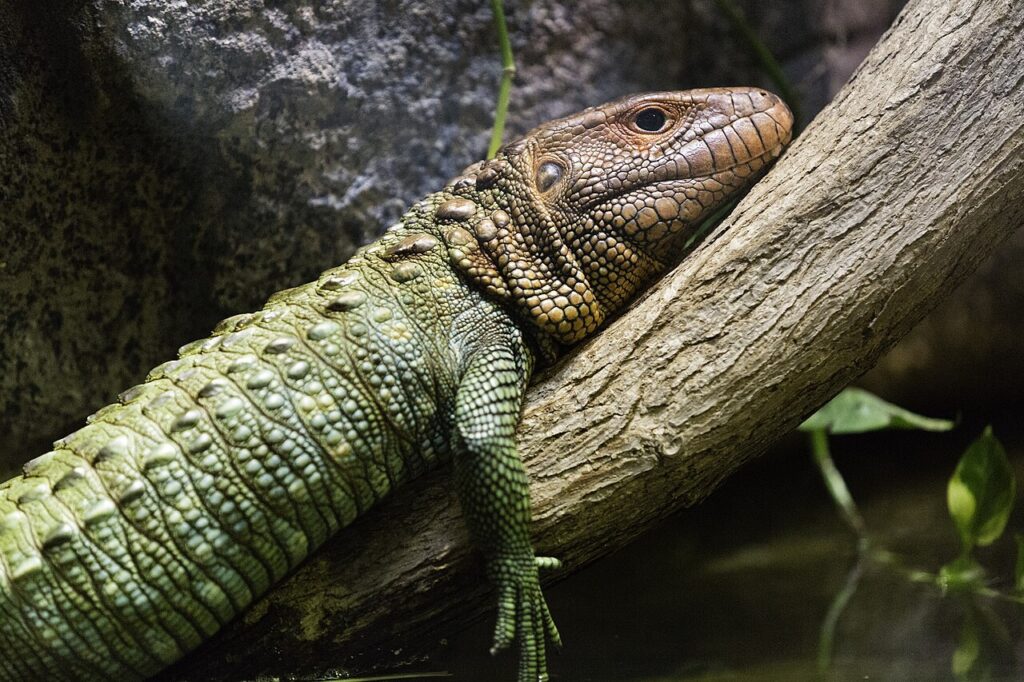
The caiman lizard (Dracaena guianensis) presents a striking example of an aggressive specialist predator, with a robust build typically reaching 3-4 feet in length and a distinctive crocodilian appearance that hints at its formidable nature. These semi-aquatic reptiles native to South American river basins possess powerful jaws equipped with specialized crushing teeth evolved for their primary diet of hard-shelled snails and crustaceans—adaptations that can deliver excruciating bites to human handlers when the animal feels threatened. Their defensive aggression manifests most prominently during breeding season or when cornered, when they may inflate their bodies, hiss loudly, and deliver powerful bites that their strong jaw muscles allow them to maintain for extended periods. Unlike some aggressive lizards that may become somewhat tame with regular handling, caiman lizards often remain unpredictable throughout their lives, with seemingly calm individuals capable of suddenly delivering serious defensive bites without obvious warning. Their semi-aquatic lifestyle adds another dimension to their challenging care, as improper humidity or water quality can exacerbate stress and increase aggressive tendencies in captive specimens.
Tokay Gecko: The Vocal Attacker
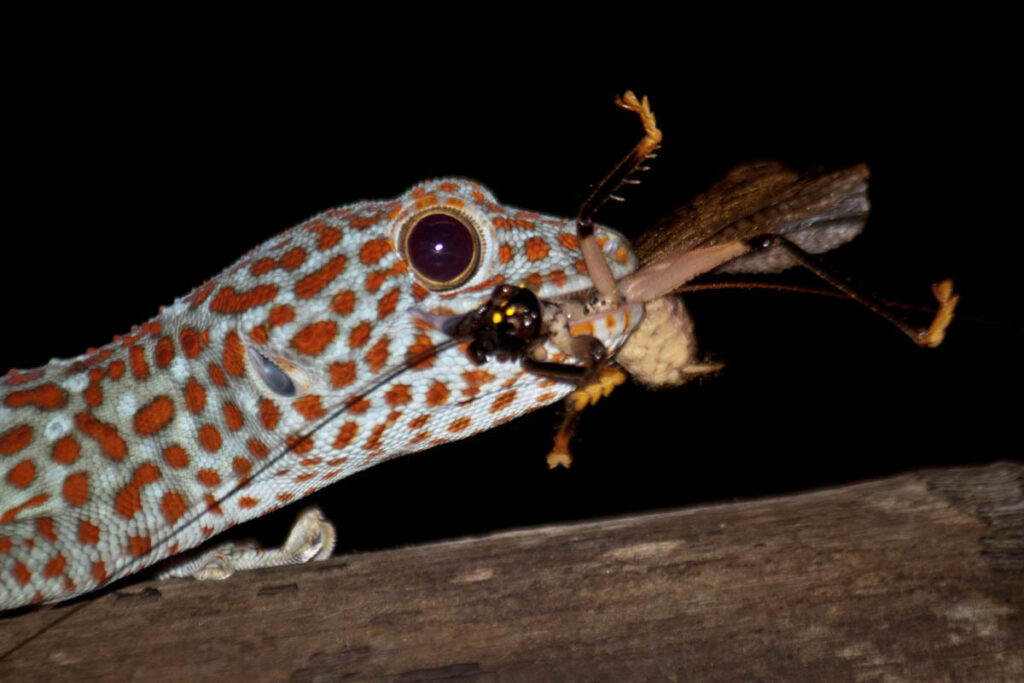
The Tokay gecko (Gekko gecko) proves that aggressive tendencies in lizards are not limited to large species, as these medium-sized arboreal geckos—rarely exceeding 15 inches in length—are renowned for their disproportionately fierce temperaments. Native to Southeast Asia, these colorful reptiles possess powerful jaws relative to their size and are infamous for their willingness to bite repeatedly and maintain their grip with remarkable tenacity, sometimes requiring water immersion to force release. Their aggressive displays begin with their namesake loud “To-kay” vocalizations, followed by opening their mouths wide to reveal their strikingly colored oral cavity, raising their bodies, and lunging toward perceived threats with surprising speed and accuracy. Wild-caught specimens are particularly notorious for their defensive bites, which they may deliver without provocation when handled, making them problematic pets despite their attractive appearance and relatively common availability in the pet trade. Even captive-bred individuals often retain significant defensive aggression, with full taming being the exception rather than the rule, making them suitable only for experienced keepers who appreciate their spirited nature and can handle them safely when necessary.
Green Iguana: The Misunderstood Aggressor
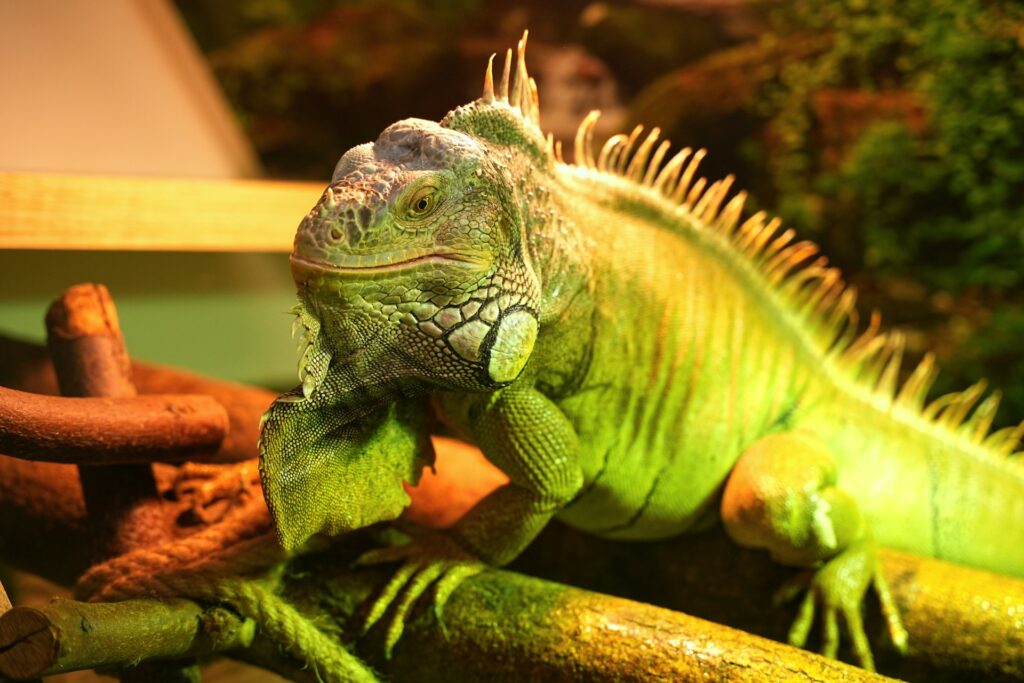
The green iguana (Iguana iguana) represents one of the most commonly misunderstood aggressive lizard species, with its widespread availability in the pet trade often misleading novice keepers about its potentially dangerous temperament. These impressive herbivores can grow to exceed 6 feet in length and develop formidable defensive weapons, including razor-sharp teeth, powerful jaws, whip-like tails that can split skin, and three-pronged claws capable of delivering deep scratches. Their aggression typically becomes most pronounced during breeding season, particularly in male specimens, which undergo hormonal changes that dramatically increase territorial behavior, including head-bobbing displays, dewlap extensions, and charging attacks that can include powerful bites and tail whips. The severity of their bites should not be underestimated, as their serrated teeth can tear flesh deeply, creating wounds that often require medical attention and may lead to serious infections if not properly treated. Perhaps most concerning from a safety perspective is their unpredictable nature—seemingly docile individuals can suddenly develop aggressive tendencies with sexual maturity or seasonal changes, transforming a once-handleable pet into a dangerous animal requiring specialized care and facilities.
Savannah Monitor: The Deceptive Defender
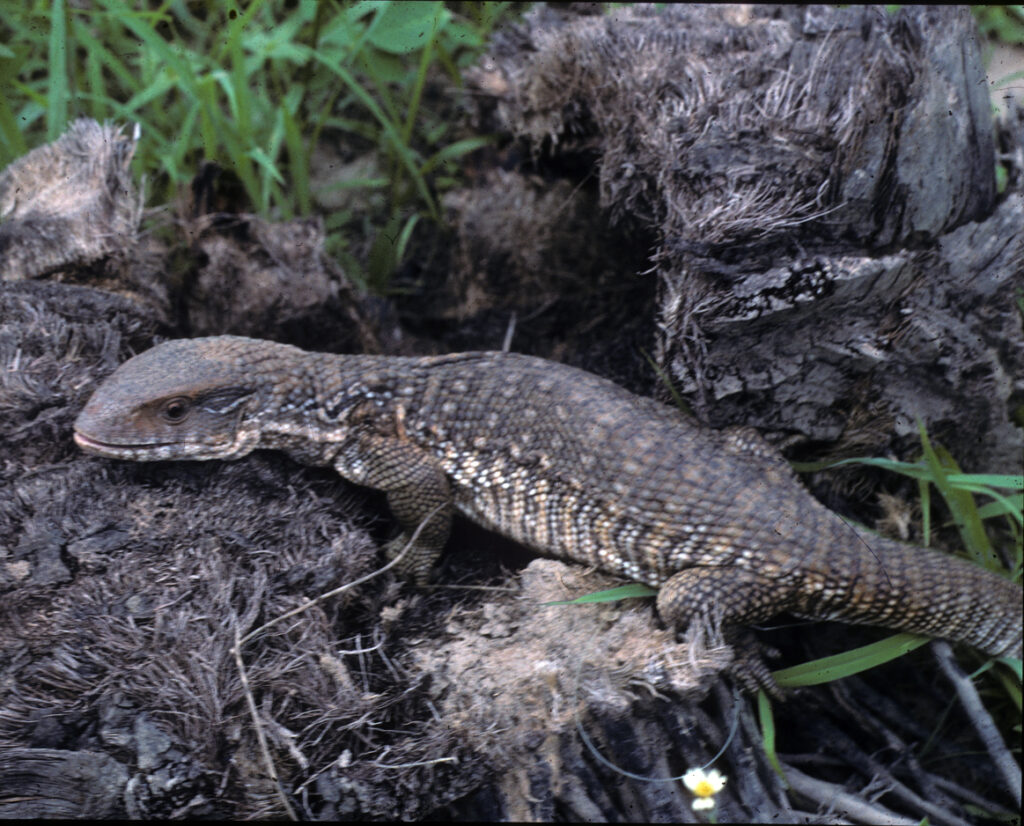
The Savannah monitor (Varanus exanthematicus) represents a particularly deceptive case among aggressive lizard species, as their initial docile appearance often misleads keepers into underestimating their potential for defensive aggression. These African predators typically grow to 3-4 feet in length and possess a powerful build with muscular jaws, sharp claws, and a thick tail capable of delivering painful strikes when the animal feels threatened. While juvenile specimens may seem relatively manageable, adult Savannah monitors can display startling bursts of aggression, particularly when cornered or improperly handled, lunging forward with open mouths, inflated bodies, and raised postures before delivering powerful bites that their strong jaw muscles allow them to maintain with surprising tenacity. Their defensive bites present significant concerns beyond the immediate mechanical damage, as their mouths harbor numerous bacteria that can cause severe infections requiring medical intervention, particularly when deeper tissues are penetrated. Even captive-bred individuals with regular handling retain their wild instincts and can display unpredictable defensive responses, particularly during breeding seasons or when experiencing environmental stressors, making them suitable only for experienced keepers with proper equipment and handling protocols.
Tegu Lizards: The Intelligent Aggressors

Tegu lizards (Salvator species) present a complex case among aggressive reptiles, combining remarkable intelligence with territorial instincts and powerful physical attributes that demand respect from handlers. These South American lizards can reach 4-5 feet in length and possess an impressive arsenal of defensive weapons, including sharp teeth, powerful jaws capable of crushing bone, strong claws, and a muscular tail that serves as both a weapon and counterbalance during confrontations. Their aggression typically manifests most prominently during breeding season, when males especially become highly territorial, displaying head-bobbing, inflation of the jowls, and raised postures before potentially launching into bites that their intelligence makes particularly dangerous, as they can target vulnerable areas and plan complex attack strategies. Unlike some aggressive lizards, tegus can distinguish between individuals and may develop specific aggressive responses to particular handlers who have previously stressed them, holding what appears to be grudges that can last for extended periods. Their intelligence presents a double-edged sword—while it allows them to potentially recognize regular handlers and become somewhat tame with proper socialization, it also means they can learn escape methods, anticipate handling attempts, and develop sophisticated defensive strategies that make improperly tamed specimens particularly challenging to manage safely.
Frilled Lizard: The Intimidating Bluffer

The frilled lizard (Chlamydosaurus kingii) employs one of the most distinctive aggressive displays in the reptile world, utilizing an elaborate bluffing strategy that makes it appear far more dangerous than its actual physical capabilities might suggest. Native to northern Australia and New Guinea, these relatively slim lizards reach lengths of 2-3 feet and possess a remarkable expandable frill around their neck that can be rapidly deployed when the animal feels threatened, increasing their apparent size dramatically and revealing brightly colored tissue designed to startle predators. Their aggressive display continues with a wide-open mouth showing a vividly colored oral cavity, hissing sounds, body inflation, and an unusual bipedal stance as they rear up on hind legs, sometimes charging forward while maintaining this intimidating posture. While their bites lack the power of larger monitor lizards and they possess no venom, their defensive aggression when cornered can still result in painful nips from sharp teeth and scratches from their claws when they attempt to flee across a handler’s body. Their stress-prone nature means that wild-caught specimens rarely acclimate well to captivity, maintaining their defensive responses despite regular handling, while even captive-bred individuals may deploy their impressive frill display and associated aggressive behaviors when feeling insecure or during breeding season.
Safety Precautions and Handling Techniques
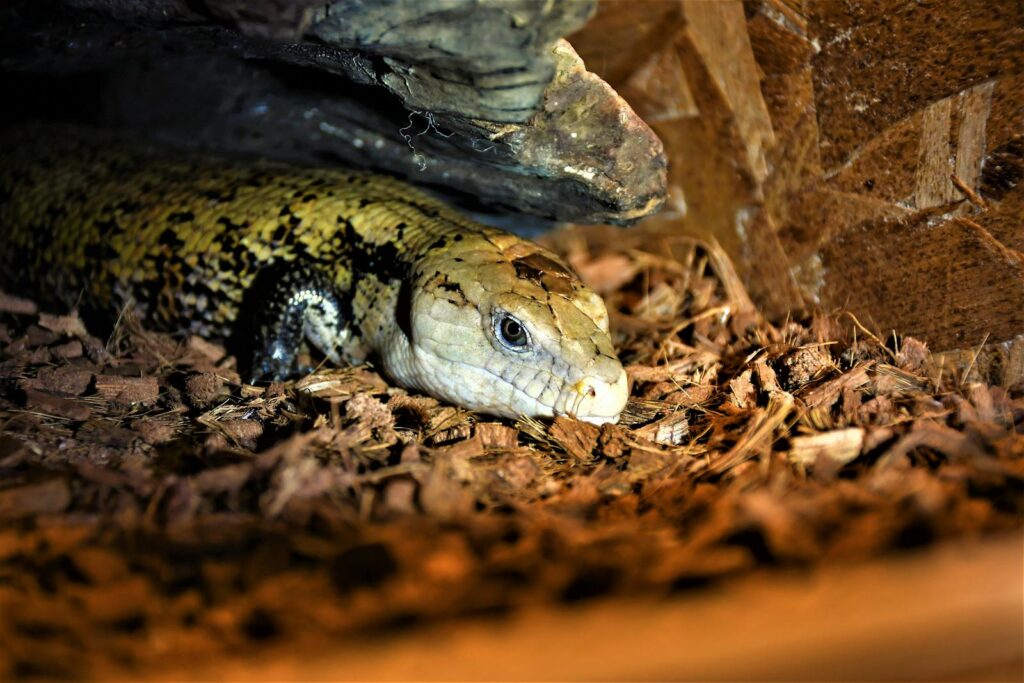
Working safely with aggressive lizard species demands specialized knowledge, equipment, and techniques that minimize risks to both handler and animal, with proper preparation being the cornerstone of responsible interaction. Protective gear should always match the species’ capabilities—thick leather gloves may suffice for smaller species like Tokay geckos, while larger monitors may require specialized arm guards, chest protection, and even face shields to prevent serious injuries during handling sessions. Handling techniques should emphasize minimizing stress through proper body support, avoiding sensitive areas like the head and tail base, and employing species-specific holds that secure the animal while allowing it to feel stable—for example, supporting monitor lizards with one hand under the chest and another gently controlling the base of the tail. Environmental management plays a crucial role in aggression reduction, with proper enclosure size, appropriate hiding places, optimal temperature gradients, and regular feeding schedules all contributing to decreased defensive behaviors in captive specimens. Perhaps most importantly, all interactions should proceed with an abundance of caution and respect for the animal’s natural behaviors, recognizing warning signs like hissing, body inflation, or elevated postures as serious indicators to modify the approach or postpone handling entirely—a moment of patience can prevent serious injuries and maintain trust in the human-reptile relationship.
Conclusion: Respect Above All
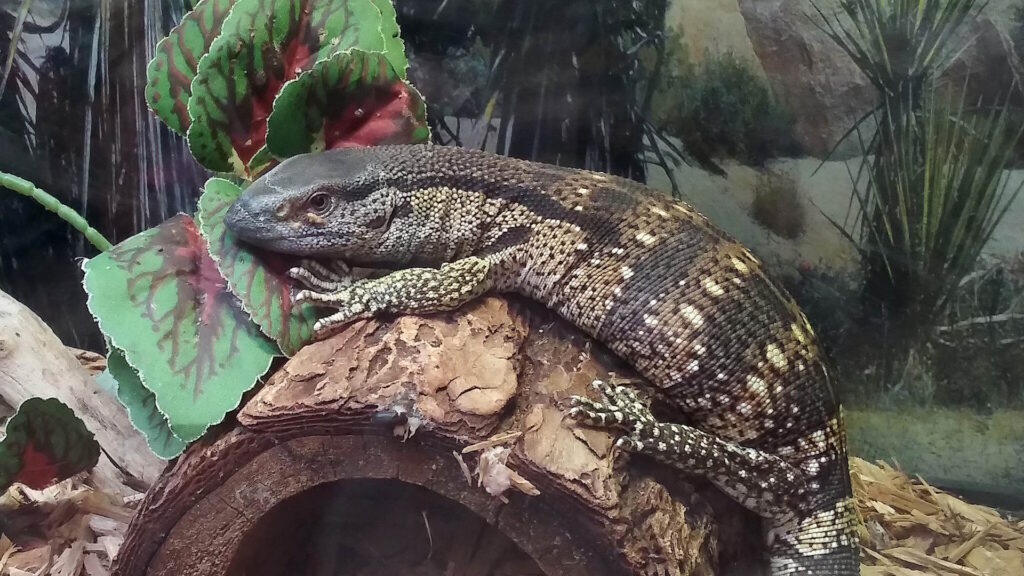
The most aggressive lizard species demand our utmost respect—not fear or avoidance, but a deep understanding of their natural behaviors, defensive mechanisms, and the evolutionary pressures that shaped their responses to perceived threats. While species like the Komodo dragon, various monitors, and venomous heloderms present genuine dangers to human handlers, their aggression rarely represents malice but rather sophisticated survival adaptations honed over millions of years of evolution. For those who choose to work with these remarkable

